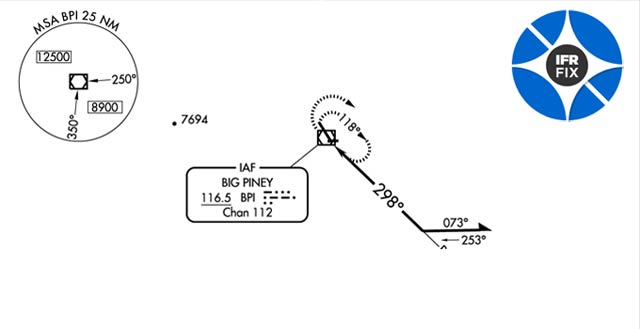
What's the most important altitude depicted on an instrument approach plate?
Approach minimums are a snap choice. Inviolable on checkrides and for safety, they are among the least rounded numbers in IFR operations. The VOR RWY 31 approach to Miley Memorial Field in Big Piney, Wyo., permits descent to 7,680 feet msl, placing you precisely 715 feet above ground level—a value definitely worth publication beneath the approach minimums.
Missed-approach altitudes regularly get votes for most valuable altitudes. They assure safe passage should disappointing weather or disappointing pilot performance require an exit strategy. Just before starting an approach, you review those numbers (don't you?).
Here's an alternative proposition. The most important altitude on an approach plate is one you may never use, or even bother to look at—but do, because when you need to know, the minimum safe altitude (MSA) is one of the few things you will know for sure about your situation.
“The MSA is provided for emergency purposes only and guarantees 1,000 feet obstruction clearance in the sector indicated with reference to the bearings in the circle,” says the Instrument Flying Handbook . “For conventional navigation systems, the MSA is normally based on the primary omnidirectional facility (navaid) on which the IAP is predicated. The MSA depiction on the approach chart contains the facility identifier of the navaid used to determine the MSA altitudes. For RNAV approaches, the MSA is based on the runway waypoint for straight-in approaches or the airport waypoint for circling approaches. For GPS approaches, the MSA center header is the missed approach waypoint.”
The area represented by the MSA circle is typically a 25-nautical-mile radius, but can differ. The Miley Memorial approach depicts two MSA sectors defined by magnetic bearings to the VOR. Maintaining positional awareness would likely add to demands of an emergency involving loss of navigation capability or an off-route weather diversion.
ATC will be focused on the MSA when providing an assist. After a controller helped a fixed-gear single escape icing on an IFR flight, the event had raised enough procedural issues that a filing to the Aviation Safety Reporting System followed, including this reflection: “What I needed to make sure he understood was that at all times the minimum safe altitude was 2900.”
Know the sectors, know their MSAs, and visualize your position: Not a bad practice exercise for the next proficiency flight.



